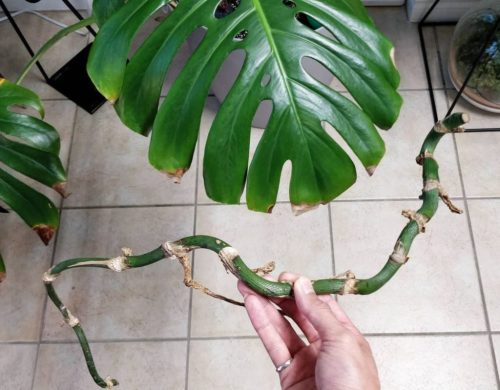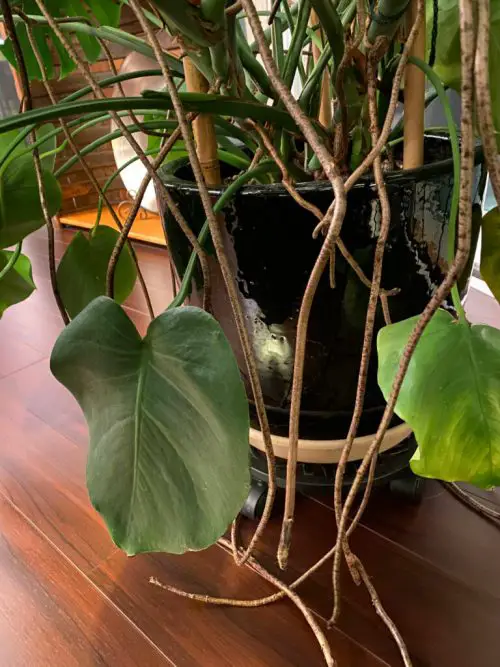Monstera Node vs Aerial Roots: What are the differences between these two? Let’s have a look at them in detail!
What is a Monstera Node?

Nodes in all plants are a section you can use to propagate – a point from which new growth emerges. It is an important part of the monstera’s anatomy.
When it comes to appearance, nodes look like bumps or nubs – you can easily spot them as raised sections, with a knobby appearance, that runs across the length of the stem.
Check out Traveler Palm vs. Bird of Paradise differences here
Details About Monstera Aerial Root

Aerial roots look like extended stems or roots in brown color that you can spot easily as they dangle down the plant. They remain in the air and never go towards the soil. Their main purpose is to absorb nutrients and moisture from the environment.
These aerial roots can also cling to surfaces like a wall or a nearby plant. Some of the aerial roots can also grow from nodes.
Magnolia vs. Tulip Tree: All the Differences
Monstera Node vs Aerial Root: Key Differentiation Points
1. Appearance
Nodes have a knobby and thick appearance, while aerial roots are more root-like and then can extend upto 1-3 feet, or maybe more.
2. Function
Nodes are an important part of the plants and act as a propagation point. Aerial roots, on the other hand, are for support of the plant and moisture absorption.
3. Growth
Nodes are always on the stems. Aerial roots grow from nodes or stems and dangle downwards or outwards into the air.
Traveler Palm vs. Bird of Paradise: All the Differences
Monstera Node vs. Aerial Root: Which is More Important?
1. Nodes
They play a vital role during propagation while growing the plant from cuttings. You can also tell the condition of the plant by looking at the node – a healthy and plump nide signifies a thriving plant.
2. Aerial Roots
While aerial roots have no importance when it comes to propagation, they play a vital role in keeping the plant anchored in the wild. As monsteras are natural climbers, the aerial roots make sure they stay in place while getting the important nutrients and moisture, especially in a humid environment.
While growing monstera indoors, nodes are more crucial, as you can use them to multiply the plants from cuttings. Aerial roots add aesthetic value and can contribute to the plant’s health, but they are not essential for survival in a controlled environment.


